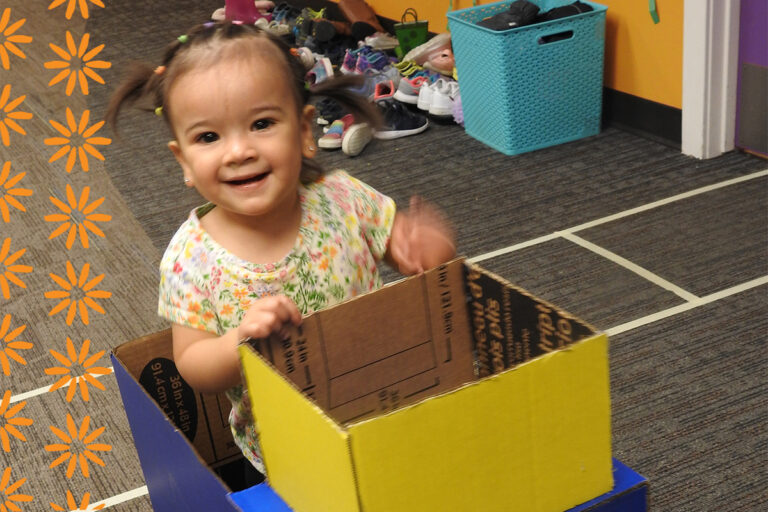So Many Colors
Learning colors is a fun part of development for children. As they grow from the baby stage to toddlers to little people entering pre-school and beyond, they pick up more and more colors to impress parents and teachers. But what are the best ways to ensure that kids retain the names of colors with the particular concepts they match with? Black and white dominate color interest in babies as early as four months. At around 18 months, a child can begin to discern differences between primary and contrasting colors. By the time children are three, learning colors for toddlers includes discerning colors and identifying them by name. Find out different ways to help your child begin identifying more colors earlier on by supporting their learning journey.
Teach Colors in Small, Meaningful Steps
Your baby is considered a toddler at the one-year mark. For most pediatricians and early education specialists, the agreed-upon time to begin color teaching is around the 18-month mark. However, no time is too early to start exposing your child to colors. As your child turns one, make sure that you have plenty of colorful options for them to choose from.
When they get closer to the 18-month mark, begin introducing one color at a time during each play session and repeat it over and over. Say the color aloud as you engage in play. As the 18-month mark passes and begins nearing the 2-year stage, contrasting colors, such as red and green, can be introduced into each play session. You will have already worked with each color independently, and now you are introducing two different colors to foster discerning the difference between the two.
Sorting and Sensory Play Increase Retention
Most babies can open and close a fist regularly at around four months, and from that time, they benefit from sensory play. Sensory play increases engagement because it activates more than one area of the child’s senses as they learn and grow. Using sensory play as a part of learning colors for toddlers is an ideal practice.
To include sensory play into color learning, use different colored objects with varying textures for your child to touch. Finger painting and sorting activities are ideal sensory activities, and sorting activities are one of the most pleasurable activities for a child because they can achieve measurable visual success. Combining sensory play with sorting is a stimulating experience that creates learning pathways that help create memories.
Help You Child Distinguish Contrasts
Using contrasting colors to help your child begin distinguishing between color concepts is a routine practice. However, it can be challenging because many pre-schools and early childhood education centers focus on first learning primary colors. Basic colors for kids usually include red, yellow, and blue. You may find it beneficial to focus on learning primary colors during one-on-one play and then use contrasting colors in different activities.
If you are unsure which colors are contrasting, it may also be helpful to have a color wheel available for you and your child to use during playtime. Color wheels identify primary and secondary colors and provide contracting color combinations that make it easier for children to discern between two colors. Common contrasting color combinations include:
- Orange and blue
- Purple and yellow
- What is the time commitment?
- Green and red
- Black and white
Color Puzzles Are a Two-Part Activity
Puzzles are a great activity to practice with as your child learns to sort colors. Rather than leave your child to independently work on a puzzle, stay with them and help them do the puzzle together. Matching shapes with colors will help them retain color knowledge but not become frustrated with too difficult a task. Learning colors for toddlers is supported with repeated exposure. Puzzles are often a more advanced sorting activity for older children because they require a higher level of thinking and multiple levels of task execution. If your child is nearing the three-year mark, you may find that colors puzzles are a great activity to begin bridging to independent play.
One Fish, Many Different Colors
Understanding color can be challenging for young children – color is, after all, a concept rather than a tangible item. To help your child grasp how color works, use the same objects to explain different colors. This practice helps children develop the idea that a fish can be green and orange rather than the idea that all fish are also green. This activity is most helpful with several different objects that can then be turned into a sorting game so that your child can see how same-colored items can be different.
Labeling and the Benefits of Overexposure
Children do not begin to read until around four or five years of age. Labeling everything with a matching color and its name, however, is not a lost effort. The key to helping your child discern the differences between colors is to identify how they are different. If they can look at a word, despite not being able to read it, they can still see that the visuals of yellow and red look different on their matching red and yellow paper pieces. If you want to help your child develop multilingualism, consider labeling other objects with the color and the name of the color in one or more languages. Overexposure is one of the critical practices to learning colors for toddlers.
Increase Motor Skills with Coloring
Teach colors with coloring. You can help your child develop fine motor skills and proper grasping techniques simultaneously as you work on color learning. Note that markers are more color-rich but slippery for little hands and generally reserved for brave or relaxed caregivers. More oversized crayons made especially for toddlers’ hands help develop the muscles needed to create a firm grip later on as they learn to use smaller writing utensils. You can help your child identify colors by writing them or drawing the outline of objects included in specific color groups for them to color in. For example, if you choose red, you could draw the shape of an apple, and your child could color the apple in red.
Identify Colors in Natural Environments
Work on color recognition and identification with your child in their natural environment during playtime, snack time, nap time, or even your changing routine. Thankfully, learning colors does not have to be an expensive endeavor. Use the everyday objects surrounding you and your child to point out colors as a part of the conversation. Your child will naturally point with you and likely repeat what you say. Repetition is the best practice for creating more developed neural pathways. After a while, you will find that your child will point and say the colors and names independently, without your prompting.
Color identification and discernment is a long and exciting process that begins with black and white contrasts as early as four months and continues to grow and develop over the next few critical years. The key to color learning is repetition and overexposure. To learn more about how to support your child on their learning journey, contact Casa de Corazón today.


